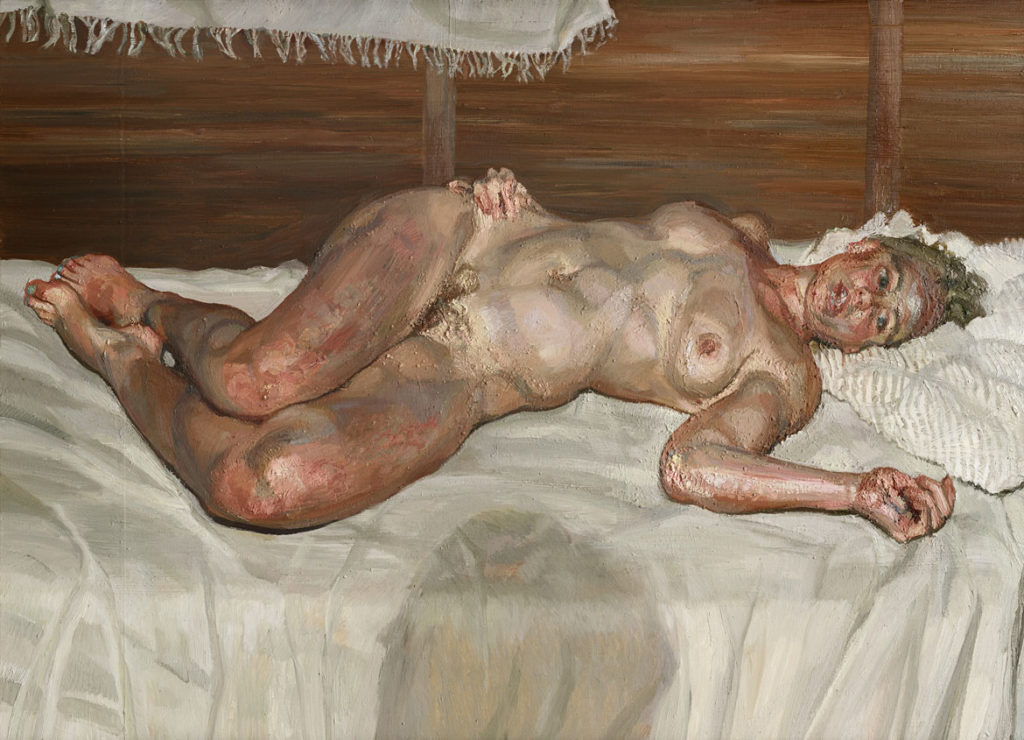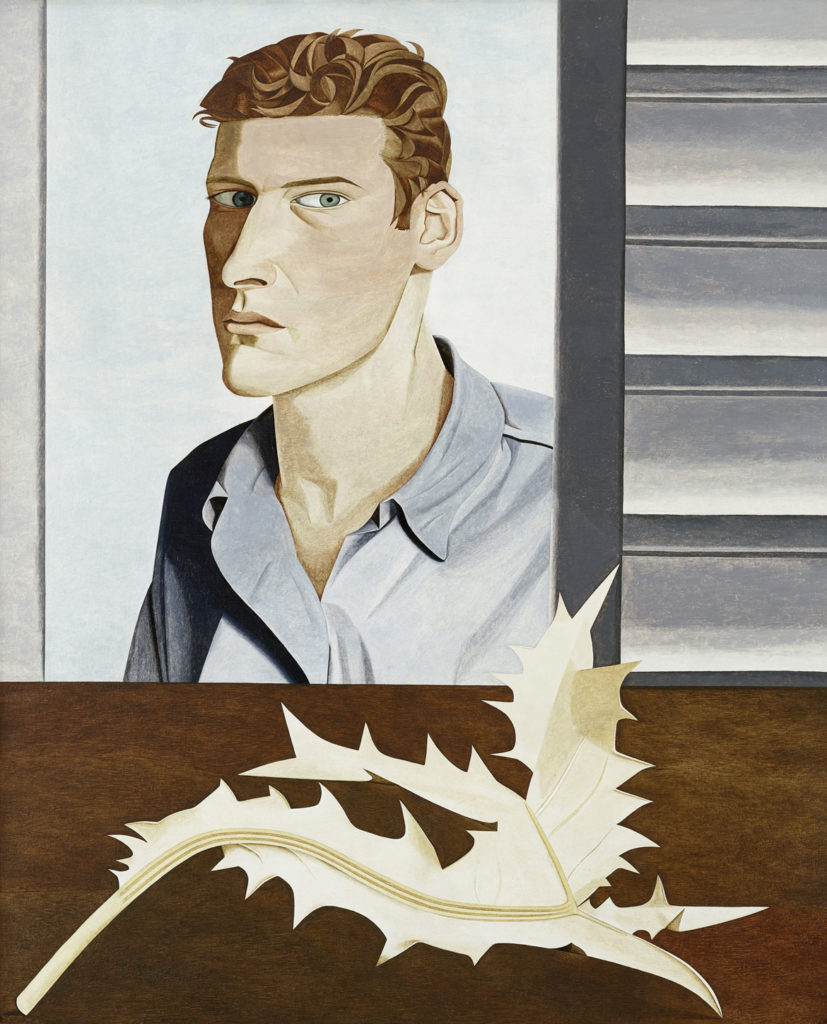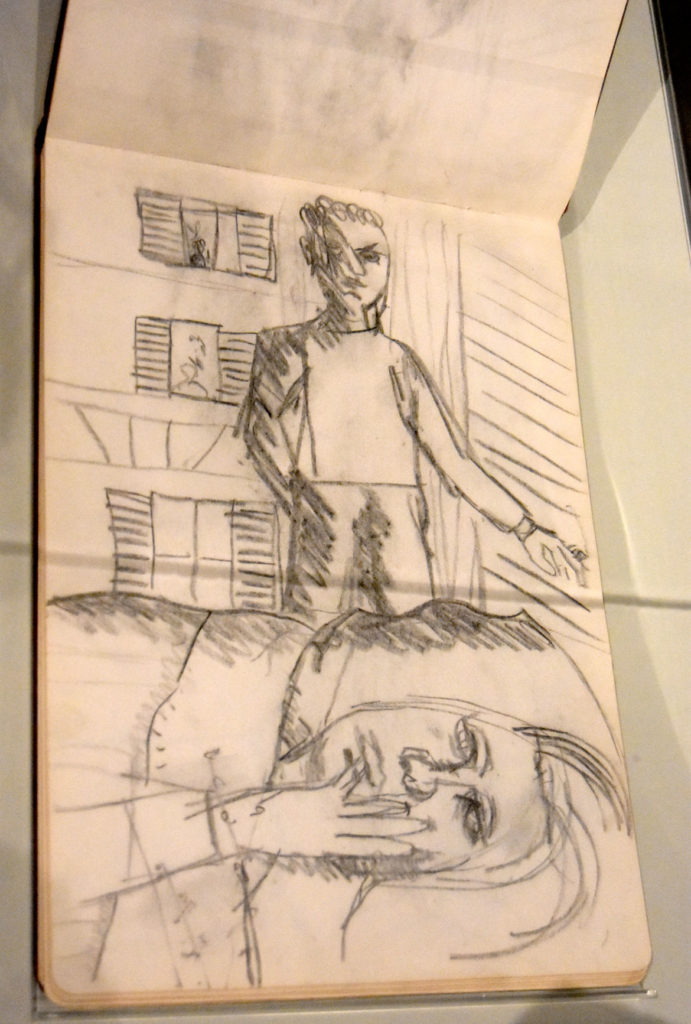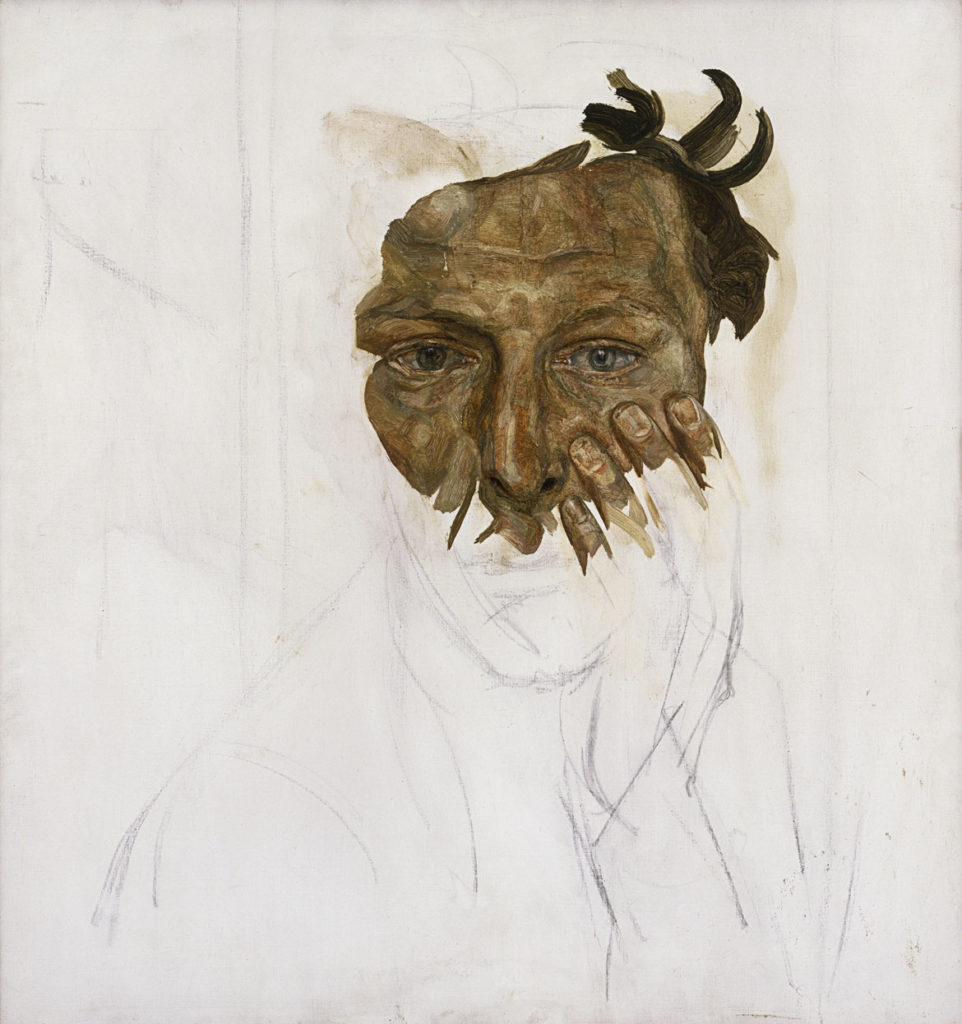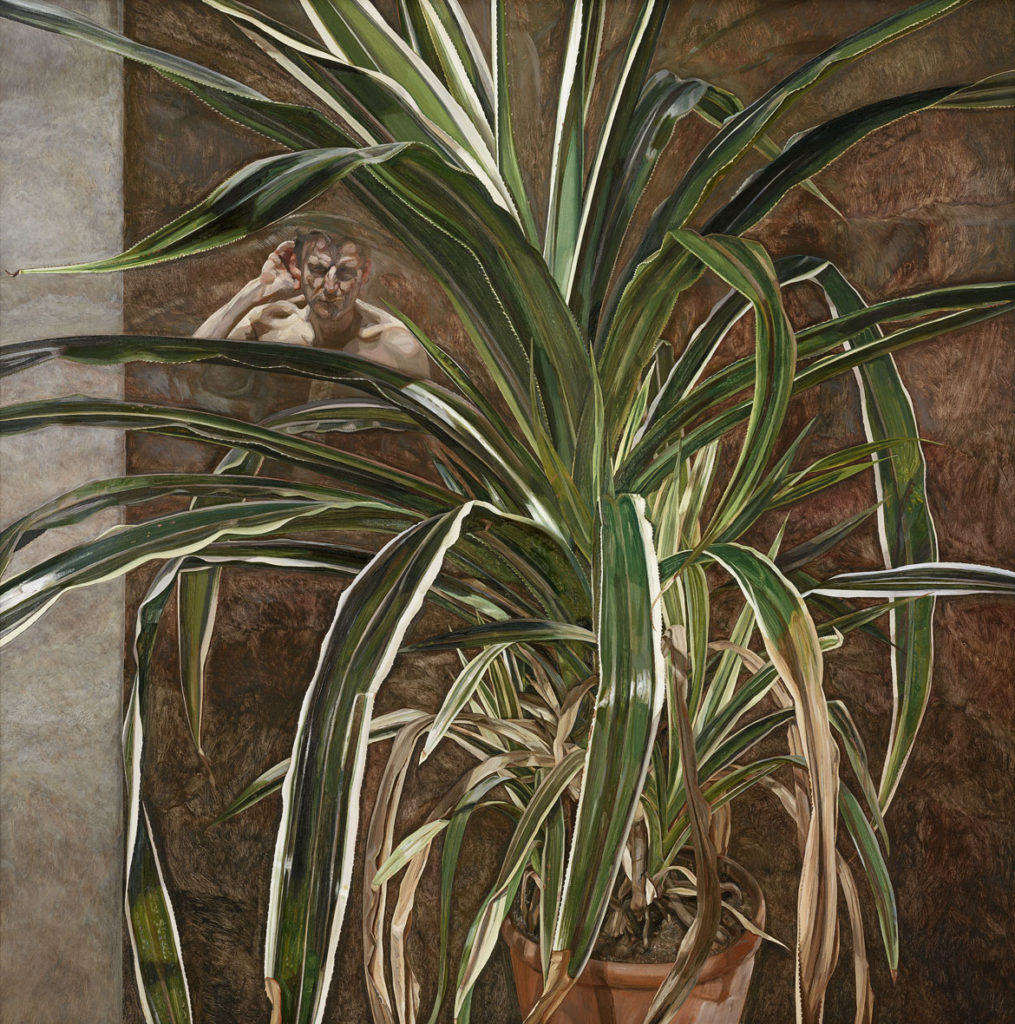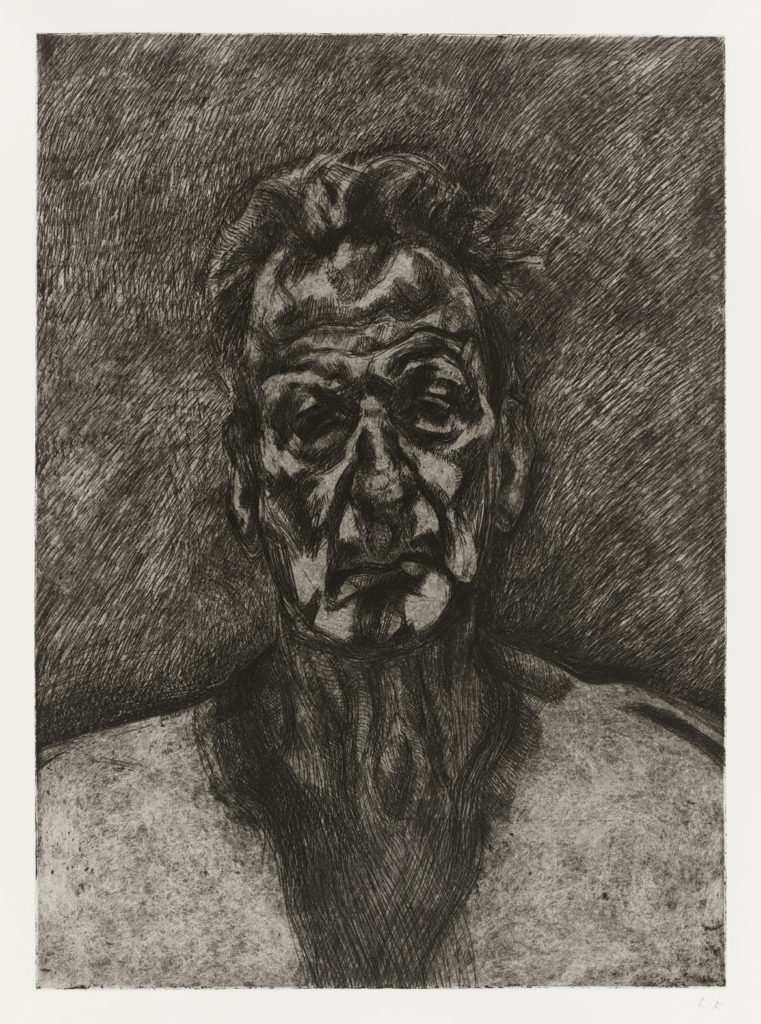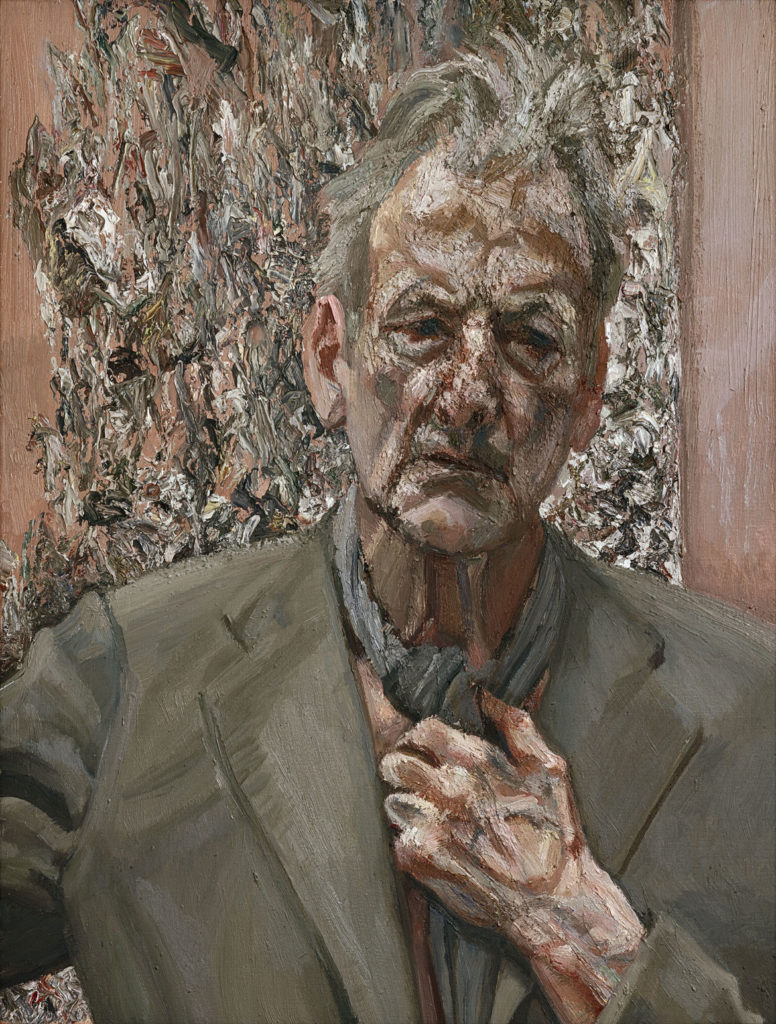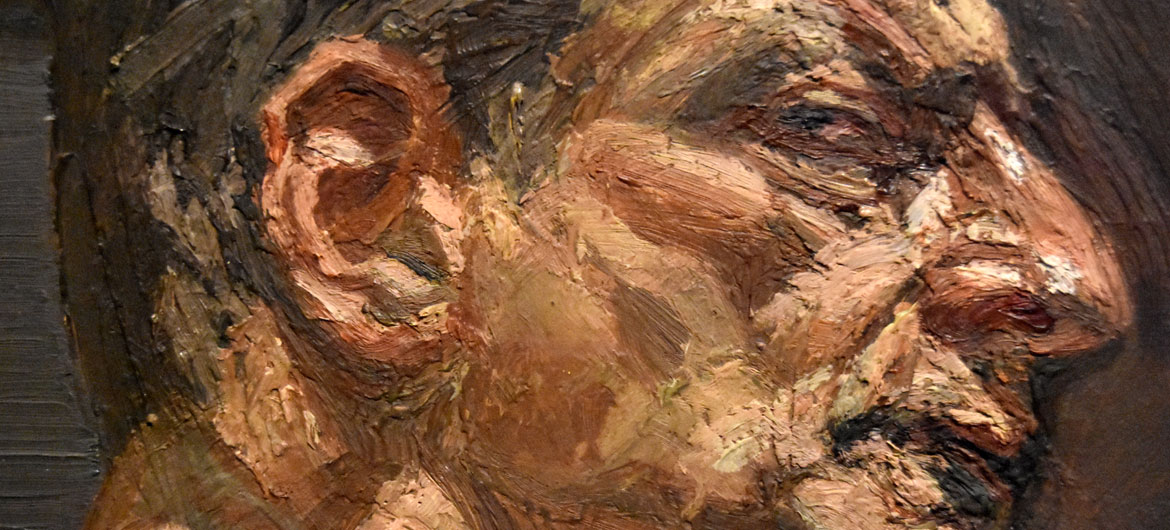Lucian Freud glowers out of many of his paintings in the modest exhibition “Lucian Freud: The Self-Portraits” on view at Boston’s Museum of Fine Arts from March 1 to May 5, 2020. During Freud’s lifetime (1922-2011), the British painter pursued a path outside the mainstream of 20th century Western modernist abstraction to become renowned as one of the greatest living realist figurative painters. His paintings buzz with his intense, sexually-charged psychological probing as well as his fierce and melancholy attention to the vicissitudes of Caucasian bodies. This was especially so in the paintings of his last few decades, where thicker paint clumped and pebbled up for a visceral feeling of aging.
“I try to see myself in unexpected ways, the person I can’t or don’t want to see in my mind,” Freud told Michael Auping about his self-portraits for the catalog to the 2012 exhibition “Lucian Freud Portraits.” “I try to paint what is actually there. I feel a certain obligation to do the self-portraits. It keeps me honest. It helps me to appreciate what I put my models through. It also helps me to see people better.”
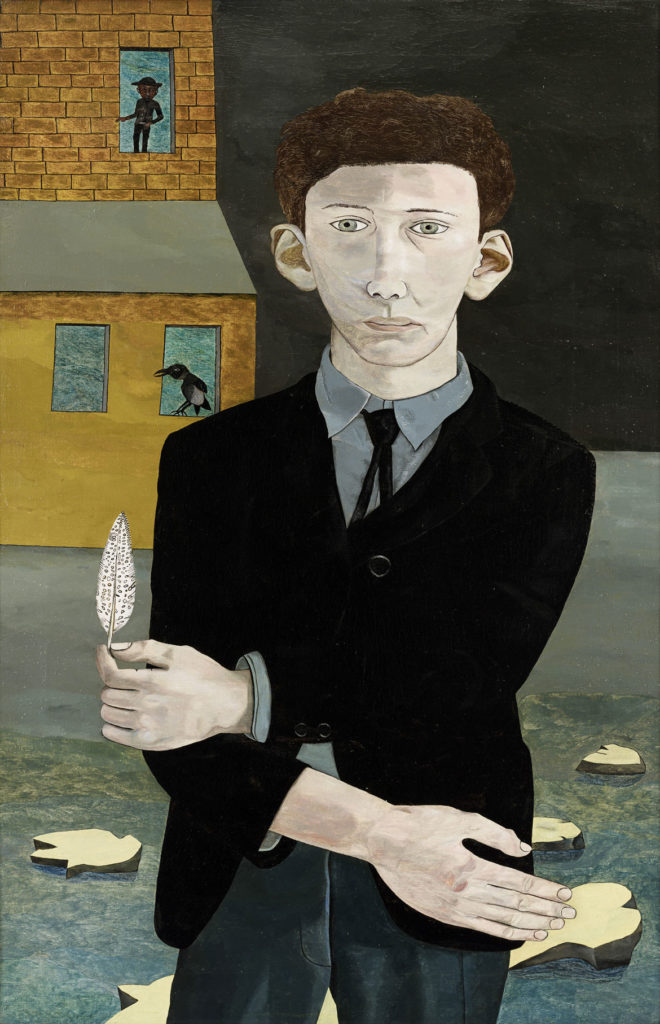
Freud was born in Berlin in 1922, the grandson of Sigmund Freud, the founder of psychoanalysis. His Jewish family quit Germany for Britain in 1933, as the murderous Nazis cemented their hold on power. The MFA exhibition begins with Freud’s early drawings and self-portrait paintings, rife with thistles and feathers and other self-consciously psychologically charged props—as he stumbles after his own identity and artistic vision.
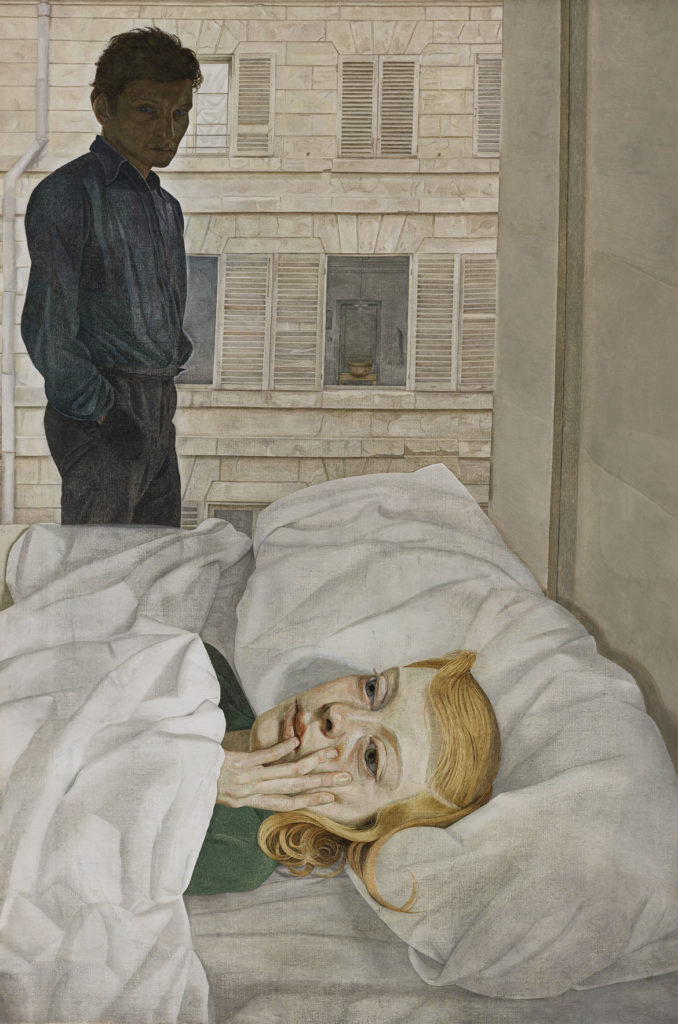
Then there’s his stunning 1954 oil painting “Hotel Bedroom,” executed in a thin, clipped, crystilline manner that echoes Andrew Wyeth. In the foreground, Freud’s second wife, Caroline Blackwood, is seemingly spotlit. She lies under the white covers, gazing at the ceiling, her golden hair curling down the pillow, her right hand on her pale cheek, her tentative pinkie in her mouth. She appears pensive, bored, exhausted, forlorn, depressed. Freud, in blue shirt and gray trousers, is a shadow lurking in the background, staring directly out at us. Their relationship feels doomed. (They were married from 1953 to ’57.) It’s like a scene out of a bourgeois domestic New Yorker magazine short story of post World War II British ennui.
Freud said the painting was a turning point—he usually sat while making paintings, but going forward he would stand at his easel for greater freedom of motion and expression. But I also suspect that after this he refused to ever be so narratively frank and vulnerable about his own emotional life again.
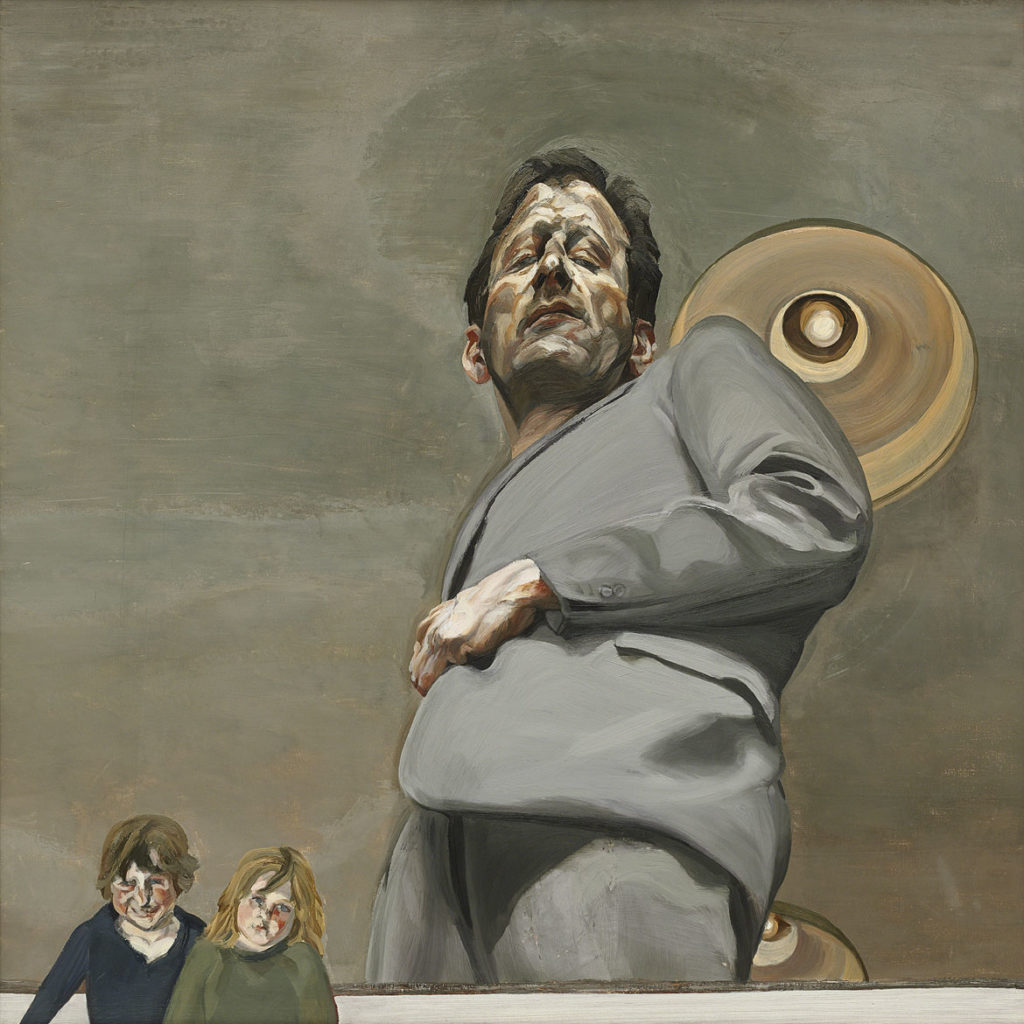
Subsequently, Freud’s scenes retreat to studies in the laboratory of his various London studios—frank, hermetic, sustained careful claustrophobic observation, purposefully awkward (“I felt that the way I put things looked awkward, in the way that life looks awkward,” Sebastian Smee quotes Freud saying in the 2005 book “Lucian Freud: 1996-2005”). The scenes feel posed in unnatural light, on meager beds, with little imagination, but a cruel intense intimacy. Freud doesn’t care about pretty surroundings or compositions. He seems uninterested in the personalities before him. He’s all bare bones, relentlessly practical—naked flesh as it’s really, literally seen. When it works, if it works for you, there’s a magnetism to his relentlessly unsparing observations.
“The idea of a thing being idealized is foreign or hostile to the way I like to make things,” Freud told William Feaver for a 1998 London Observer article.
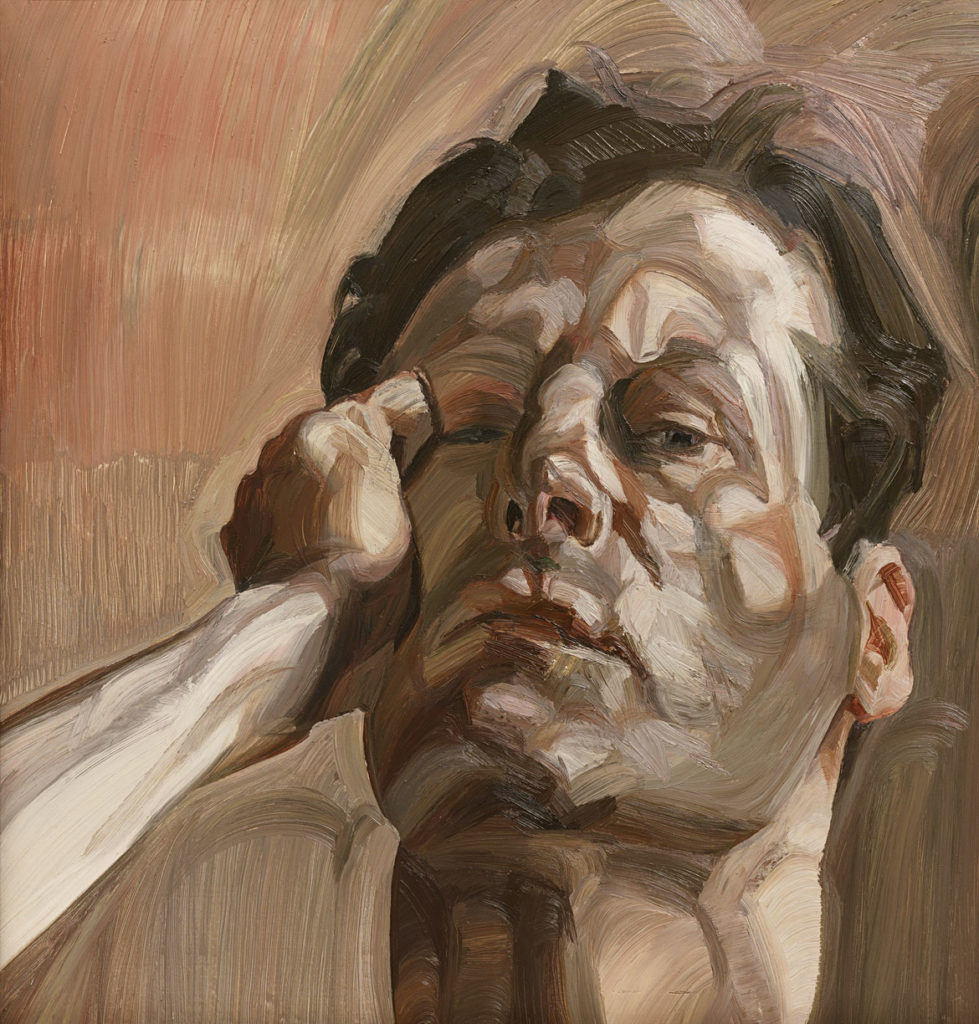
The 1960s paintings feel creamy and fast and psychologically thin, like a capable, comfortable artist without much urgent to get across—and sometimes turning to surrealist tropes to cover that up. The exhibition offers a number of unfinished, unrevealing false-start canvases (too many) with smudgy, dashed in charcoal lines and the beginnings of faces. He liked to start with faces and work out.
One of Freud’s distinctive tics, which is perhaps a carry-over from surrealism, is to often depict anatomy with a warping vision. Limbs are stretched, heads are too big or arms too small, as if he’s crept into the sitter’s space and is leering down from his standing position with a camera’s fish-eye lens.

Somewhere around the 1980s, as Freud entered his 60s, his paint thickened and clotted, like aging flesh. Now he painted his greatest works: Piercing studies of flesh and its betrayals in earthy reds and tans and browns. Bodies naked, frail, wrinkled, weathered, pudgy. The body as a tumble-down house. The body as meat.
“I think nudes have to do with making a larger, more complete portrait. It’s a more specific portrait. I can simply see more of the person” Freud told Michael Auping. “The naked body is somewhat more permanent, more factual. … When someone is naked there is in effect nothing to be hidden. You are stripped of your costumed, as it were. Not everyone wants to be that honest about themselves.”
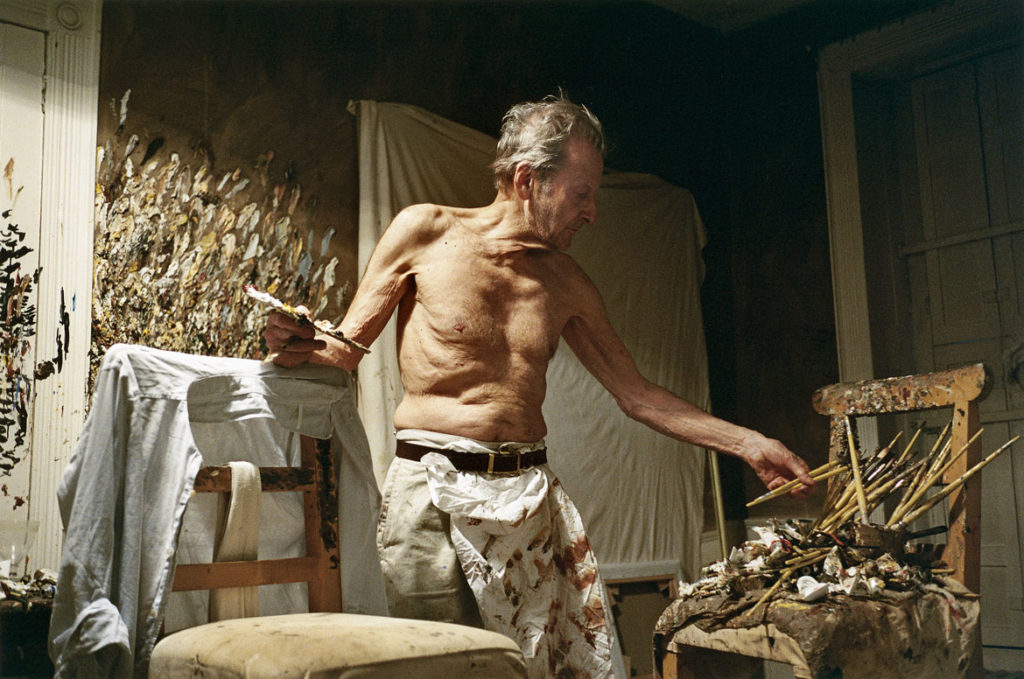
“Lucian Freud: The Self-Portraits” was organized by London’s Royal Academy of Arts in collaboration with Boston’s Museum of FineArts (curator Akili Tommasino oversaw the Boston presentation). Limiting this exhibition of more than 40 paintings, drawings and etchings to (mostly) self-portraits makes for a tidy curatorial thesis, but is too narrow. Leaving out Frued’s depictions of family members and close friends, frank and naked and blotchy, doesn’t show Freud at his most interesting or complex. It reduces the weirdness of how he viewed the people close to him. Freud’s paintings can often feel like an assertion of macho power, of dominance. They can also give the disconcerting feeling of the artist projecting his sense of his old body’s failings onto the young naked women whom he scrutinizes.
The exhibition seems to acknowledge that the self-portraits aren’t enough by including, near the end, “Two Irishmen in W11,” a 1984-85 painting of two men in suits, and “Flora with Blue Toenails,” a 2000-2001 painting of a nude young woman sprawled on a bed, with Freud’s own leering shadow creeping up the edge of the sheets.
If this is the kind of coverage of arts, cultures and activisms you appreciate, please support Wonderland by contributing to Wonderland on Patreon. And sign up for our free, weekly newsletter so that you don’t miss any of our reporting.
